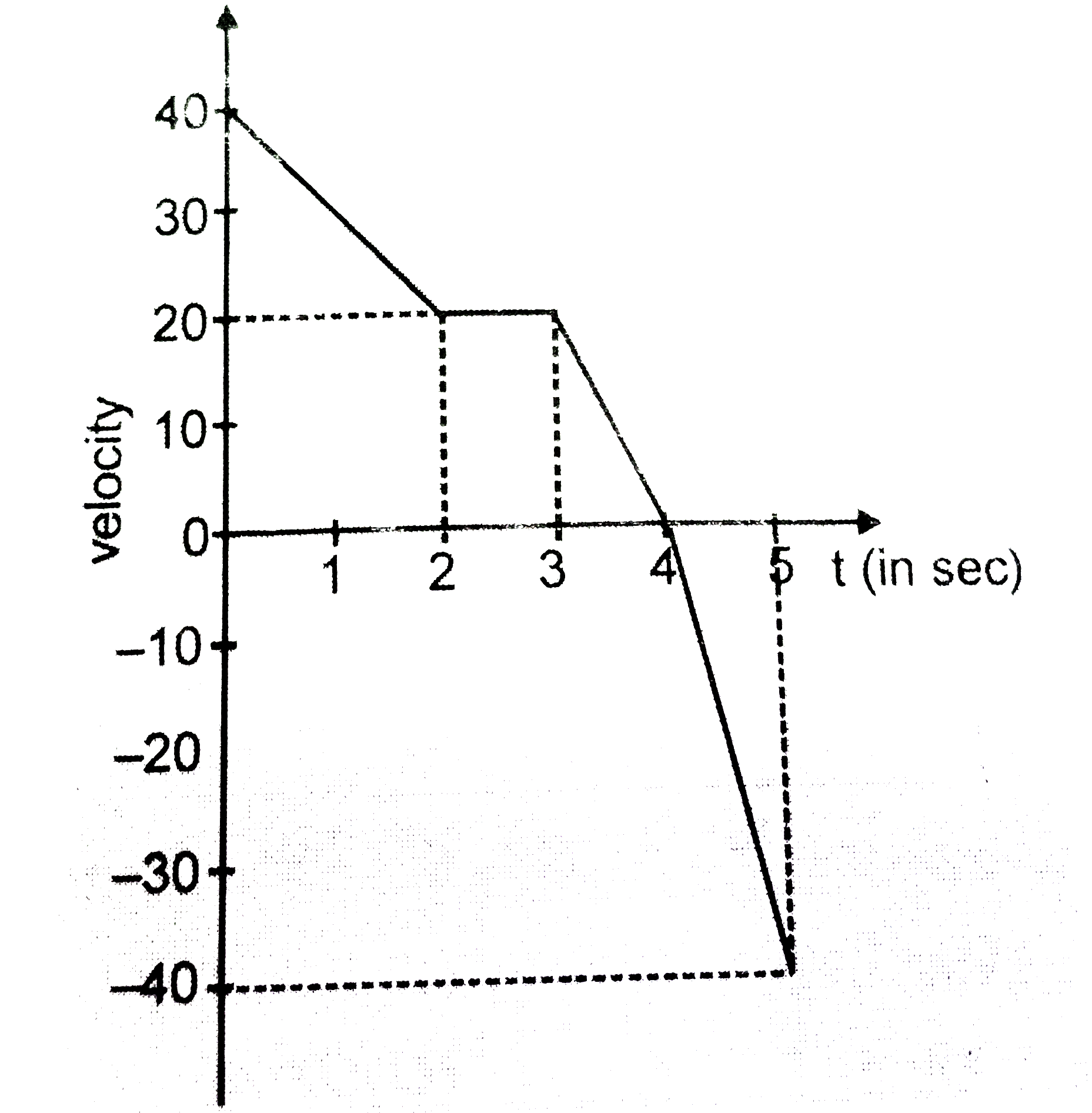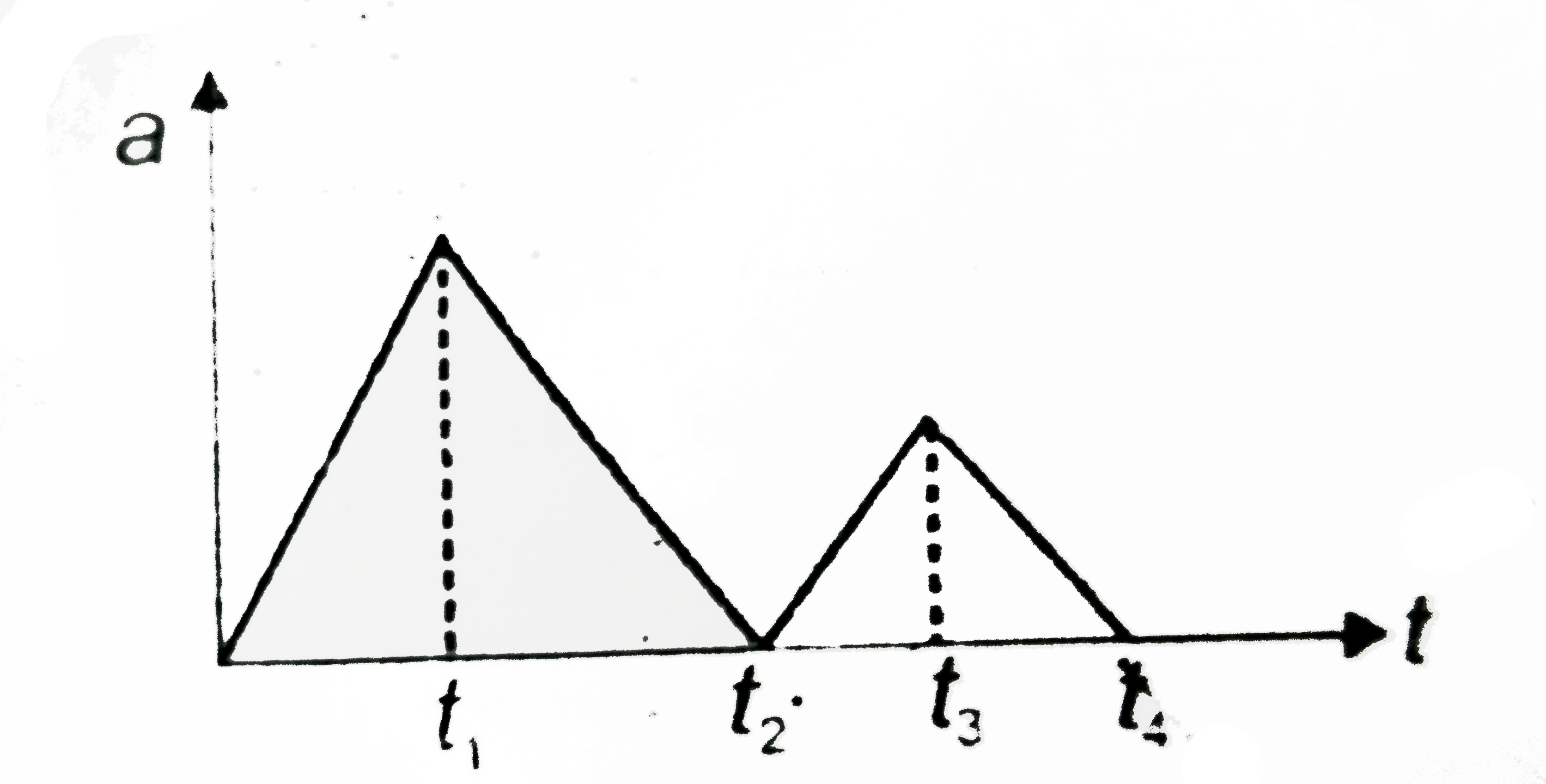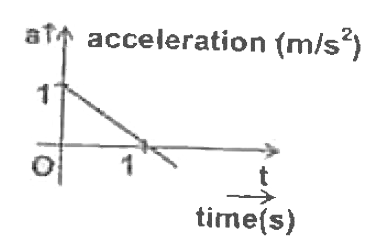A body is imparted motion from rest to move in a straight line. If it is then obstructed by an opposite force, then
the body may necessarily change direction
the body is sure to slow donw
the body will necessarily continue to move in the same direction at the same speed
none of the above
The correct Answer is:B
To solve the problem, we need to analyze the situation where a body is moving in a straight line and is then subjected to an opposite force. Let's break down the steps:
1. Initial Condition: The body starts from rest and is moving in a straight line. This means its initial velocity u=0 and it gains some velocity v as it moves.
2. Application of Opposite Force: An opposite force is applied to the body. This force acts in the direction opposite to the motion of the body. According to Newton's second law, this force will cause a deceleration (or retardation) of the body.
3. Effect of the Opposite Force: The application of the opposite force will result in a decrease in the body’s velocity. The body will start to slow down due to this force.
4. Stopping Condition: If the opposite force continues to act on the body, it will eventually bring the body to a stop. At this point, the velocity of the body will become zero.
5. Post-Stop Motion: After the body comes to rest, if the force continues to act, the body will then start to move in the direction of the force (which is opposite to its initial direction of motion). This means that the body may change direction, but it is not guaranteed that it will change direction immediately or necessarily.
6. Conclusion: Based on the analysis:
- The body will definitely slow down due to the opposite force (this confirms option 2).
- The body may change direction after coming to rest, but it is not guaranteed to do so immediately (this makes option 1 uncertain).
- The body will not continue to move in the same direction at the same speed (this negates option 3).
- Therefore, option 4 (none of this) is incorrect.
Final Answer:
The correct option is that the body is sure to slow down (Option 2).
---
- The body will definitely slow down due to the opposite force (this confirms option 2).
- The body may change direction after coming to rest, but it is not guaranteed to do so immediately (this makes option 1 uncertain).
- The body will not continue to move in the same direction at the same speed (this negates option 3).
- Therefore, option 4 (none of this) is incorrect.
The correct option is that the body is sure to slow down (Option 2).
Topper's Solved these Questions
- BOOK - ALLENCHAPTER - MOTION IN A PALNEEXERCISE - EXERCISE-340videos
MOTION IN A PALNE
- BOOK - ALLENCHAPTER - MOTION IN A PALNEEXERCISE - SOLVED EXAMPLE28videos
MOTION IN A PALNE
- BOOK - ALLENCHAPTER - MOTION IN A PALNEEXERCISE - EXERCISE-199videos
MOTION IN A PALNE
- BOOK - ALLENCHAPTER - KINEMATICS-2DEXERCISE - Exercise (O-2)46videos
KINEMATICS-2D
- BOOK - ALLENCHAPTER - NEWTON'S LAWS OF MOTION & FRICTIONEXERCISE - EXERCISE (JA)4videos
NEWTON'S LAWS OF MOTION & FRICTION
Similar Questions
Motion in Straight line
View SolutionA body of mass 2 kg is driven by an engine delivering a constant power of 1 J /s. The body starts from rest and moves in a straight line. After 9 seconds, the body has moved a distance ( in m) ……….. .
View SolutionThe motion of a particle in straight line is an example of
View SolutionA body starting from rest moves along a straight line with a constant acceleration. The variation of speed (v) with distance (s) is represented by the graph:
View SolutionA particle starts motion from rest and moves along a straight line. Its velocity-time graph is shown. Find out speed of particle at t=2s and at t=3s.
 View Solution
View SolutionA particie of mass 10 kg is driven by a machine that delivers a constant power of 20 watts. If particle starts from rest and moves along a straight line, then force (in Newton) on particle at time t(t> 0) is
View SolutionA particle start moving from rest state along a straight line under the action of a constant force and travel distance x in first 5 seconds. The distance travelled by it in next five seconds will be
View SolutionFigure shows acceleration versus time graph of a particle starting from rest and moving along a straight line. Which of the following staement (s) is/are correct ?
 View Solution
View SolutionA particle starts moving from rest on a straight line. Its acceleration a verses time t is shown in the figure. The speed of the particle is maximum at the instant
 View Solution
View SolutionA particle starting from rest moves in a straight line with acceleration as shown in the a-t graph. Find the distance (in m) travelled by the particle in the first four seconds from start of its motion.
Q View Solution
View Solution

